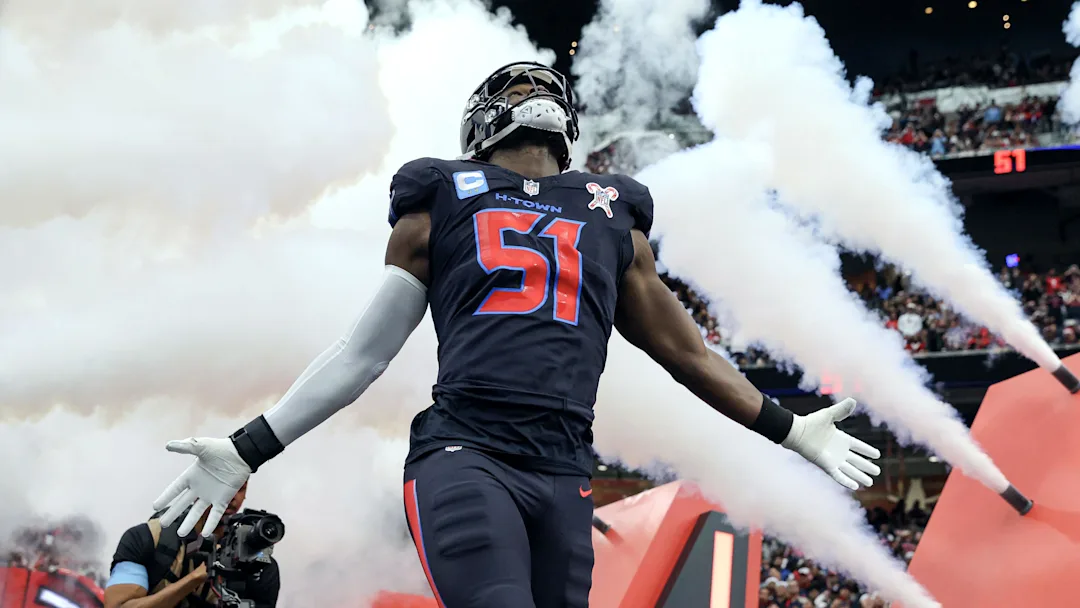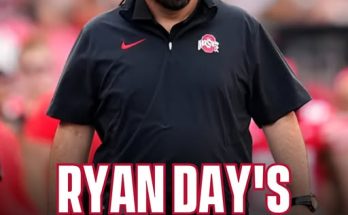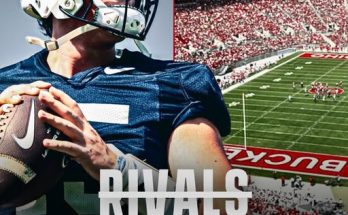It’s been nearly two years since the Arizona Cardinals and Houston Texans shocked the NFL world with a high-stakes draft day trade that reshaped the futures of both franchises. What once looked like a risky gamble for one team and a clear rebuild move for the other has evolved into one of the more compelling case studies in recent NFL history—a deal filled with intrigue, bold vision, and consequences that are still playing out across two very different rosters.
On April 27, 2023, the Cardinals and Texans agreed to a blockbuster trade that sent ripple effects through the league. The Texans moved up to the No. 3 overall pick in the 2023 NFL Draft, just minutes after selecting quarterback C.J. Stroud at No. 2, giving them back-to-back top-three picks. In exchange, the Cardinals received Houston’s 2024 first-round pick, a 2024 third-rounder, and other draft capital that helped them start retooling their roster under new general manager Monti Ossenfort.
At the time, opinions were split. Houston was praised by some for being aggressive, for refusing to play it safe, and for attempting to land both a franchise quarterback and a game-changing defensive star in one fell swoop. Others saw it as reckless—mortgaging premium future picks in a year that would ultimately feature an even deeper quarterback class and greater long-term flexibility. Arizona, meanwhile, was viewed as smart, patient, and forward-thinking, especially considering it had a roster in need of foundational talent and had just committed to a new front office and coaching staff.
Fast forward to 2025, and both teams are starting to see the results of that seismic move. The Texans used that No. 3 pick on Alabama edge rusher Will Anderson Jr., a dominant force in college football and the kind of defensive cornerstone the franchise had been lacking since the departure of J.J. Watt. Anderson’s impact was immediate. He became a vocal leader on and off the field, brought relentless energy to DeMeco Ryans’ defense, and helped Houston make a surprise run to the AFC South title in 2024. Though not without growing pains, Anderson’s presence elevated the team’s pass rush, while C.J. Stroud blossomed into one of the league’s most promising young quarterbacks.
From the Texans’ perspective, the trade worked. It was bold, expensive, and risky—but it helped accelerate their rebuild. The combination of Stroud and Anderson gave them two foundational pillars. Even though parting with their 2024 first-round pick meant missing out on a potential top-five selection, the success of their 2023 and 2024 campaigns softened that blow considerably. Winning cures everything, and in Houston, that blockbuster deal became the catalyst for a new identity built around youth, aggression, and leadership.
For the Cardinals, the trade was just as impactful—albeit for different reasons. That 2024 first-rounder they acquired from Houston became the No. 4 overall pick in the following year’s draft. Ossenfort and head coach Jonathan Gannon used the windfall of assets to build a war chest. The Cardinals ultimately selected star wide receiver Marvin Harrison Jr. at No. 4 in 2024, giving quarterback Kyler Murray the kind of elite playmaker he hadn’t had since DeAndre Hopkins was in his prime. Harrison instantly changed the dynamics of Arizona’s offense. His route-running, explosiveness, and football IQ helped stretch the field and create mismatches all over the place.
The added picks from the Texans also gave Arizona the flexibility to trade back in other deals, stockpile talent, and take more swings at future starters. The 2024 third-rounder netted them a promising interior offensive lineman, and subsequent trades helped add depth on defense and wide receiver. For a team that had been ravaged by injuries, inconsistent coaching, and a muddled identity in the post-Kliff Kingsbury era, the infusion of young, high-character talent offered real hope.
There was also the psychological benefit. The Cardinals didn’t just get premium picks—they got time. Time to evaluate Kyler Murray’s recovery from ACL surgery. Time to reestablish a culture. Time to figure out what kind of team they wanted to be. That’s the kind of breathing room teams don’t often have in today’s NFL, where instant results are demanded and patience is rare. But the trade bought Arizona a chance to rebuild on its own terms, with a long view in mind.
Still, it wasn’t without its challenges. The Cardinals’ 2023 campaign was rough—wins were hard to come by, the offense struggled, and Murray didn’t return until midseason. Even when he did, it took time for him to find his rhythm. Yet even in that adversity, the team found clarity. They knew they weren’t ready to contend immediately, but they were assembling pieces that could make them dangerous soon.
By 2025, with Murray healthy, Harrison drawing double coverage, and Paris Johnson Jr. finally playing like the dominant tackle they hoped he’d be, Arizona began to show signs of life. The roster still had holes—especially on defense—but the arrow was finally pointing up. And the fruits of that trade with Houston were a big reason why.
From a purely transactional standpoint, the Cardinals may have gotten more value. But from a football culture perspective, both teams got exactly what they needed. Houston got stars and stability. Arizona got assets and identity. And both franchises got a clean slate—something far more rare in the NFL than a high draft pick.
One of the most fascinating aspects of this deal is how it defied conventional logic. In most cases, the team trading away a top-three pick gets the upper hand simply by sheer value. Future first-round picks are like gold in NFL circles—precious, protected, and usually out of reach. But Houston bet on itself. Ryans and general manager Nick Caserio believed they could turn the corner quickly, and they were right. It’s not often you see a team trade up, give away a future first, and still come out as winners—but that’s exactly what Houston did.
Arizona’s victory came through patience. They didn’t panic. They didn’t reach. They let the market come to them and stayed disciplined. The move also established Ossenfort’s philosophy early—build through the draft, stay flexible, and don’t be afraid to move down if it means collecting more swings at the plate. It was a massive contrast to the Steve Keim era, which had been marked by flashy moves and short-term thinking.
The trade also proved something else: the power of conviction. Both franchises made their decisions based on what they believed, not what the critics said. That kind of conviction is rare—and it’s what makes the trade so fascinating in hindsight. It wasn’t just about the picks. It was about philosophy. It was about vision. And it was about timing.
Looking ahead, this deal will continue to be scrutinized. If Marvin Harrison Jr. becomes a generational wideout, and the Cardinals make a leap into NFC contention, Arizona will always be able to point to that trade as a turning point. If C.J. Stroud and Will Anderson lead the Texans to deep playoff runs or even a Super Bowl appearance, Houston fans will see that 2023 draft night as the birth of a new era.
But perhaps the most remarkable thing is that it didn’t create a winner and a loser. It created two winners, each walking a different path to relevance. That’s rare in any trade—but especially one involving multiple first-round picks and top-three selections.
In a league defined by parity, cap limits, and high stakes, the Cardinals-Texans blockbuster was a reminder that sometimes, boldness pays off. And sometimes, so does patience. What matters most is knowing who you are, where you’re going, and having the guts to make the move—whether it’s up the board or down.
Two years later, that trade still echoes. Not just because of the players involved, but because of what it symbolized: two teams with different needs, different timelines, and different identities, making one of the most daring trades in recent NFL memory. And both of them might just have gotten exactly what they needed.



